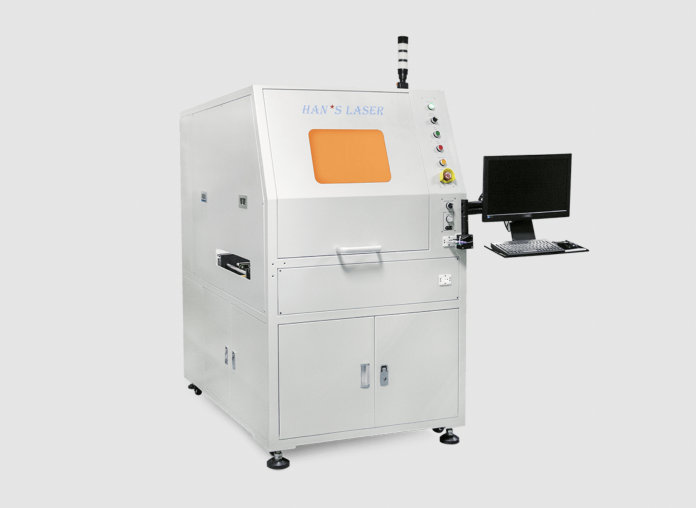PCB Laser Marking Machine from HG TECH is designed for Marking barcodes , 2D codes and characters, graphics and other information on any kind of printed circuit board. Integrated with high-performance CO2 / Fiber laser source, imported high megapixel/resolution CCD camera and micron-level mobile module, Inline PCB laser marking machine Series is competent to pre-marking automatic positioning and post-marking feedback reporting.
Features_
- PCB Laser Marking Machine from HGLASER is designed for bar codes marking, 2D codes and characters, graphics and other information on any kinds of printed circuit board. Integrated with high-performance CO2 / Fiber laser source, import high-pixel CCD camera and micron-level mobile module, PCB Laser Marking Series is competent to pre-marking automatic positioning and post-marking feedback reporting.
- High-performance CO2 / Fiber laser has high-quality laser beam, small focusing spots and well-distributed power
- The high-pixel CCD camera makes automatic positioning, identification and feedback reporting come true
- Gantry structure and synchronous transmission guideways ensure the stable and precision performance
- The function of automatic focusing and track width adjusting are designed to match up different production line
In simplest terms, laser marking is a permanent process that uses a beam of concentrated light to create a lasting mark on a surface. Typically performed with a fiber, pulsed, continuous wave, green, or UV laser machine, laser marking encompasses a wide variety of applications. The most common types of laser marking applications are:
- Annealing
- Carbon migration
- Discoloration
- Engraving
- Etching
Laser marking can be automated and processed at high speeds, while leaving permanent traceability marks on a range of materials, including steel, titanium, aluminum, copper, ceramic, plastic, glass, wood, paper, and cardboard. Parts and products can be marked with text (including serial numbers and part numbers); machine-readable data (such as barcodes, Unique ID codes, and 2D Data Matrix codes); or graphics.
HOW LASER MARKING WORKS?
Laser marking works by using a focused beam of light to mark the surface of a material. When the beam interacts with the material’s surface, it alters the material’s properties and appearance. This concentrated beam targets only a specified area, allowing the laser marking machine to create precise, high quality, high-contrast marks that are easy to read or scan on virtually any surface. This feature makes laser marking ideal for applications where accuracy and permanency are critical to success.
The word LASER is actually an acronym for Light Amplification by the Stimulated Emission of Radiation. A laser beam begins as an atom that is stimulated to release particles of light. This light can be concentrated and directed toward a laser marking area. The energy that is released is measured in wavelengths or nanometers (NM). The higher the wavelength, the more powerful the laser beam.
For example, a UV laser marker, which has a wavelength of around 355NM, offers a lower power for marking heat-sensitive materials such as plastic and glass. Because UV laser markers and other machines in the “cold laser” category emit less energy, they are great solutions for many organic or soft products, as they are less likely to burn the material. A fiber laser, on the other hand, operates at 1070NM, delivering significantly higher power to mark harder materials, such as metal.
Compared to other non-permanent marking processes such as printing or labeling, laser marking uses no consumables and requires less maintenance. Our team also offers fast and reliable customer support, including two-hour response times and free marking samples, for maximum up-time and system productivity.

